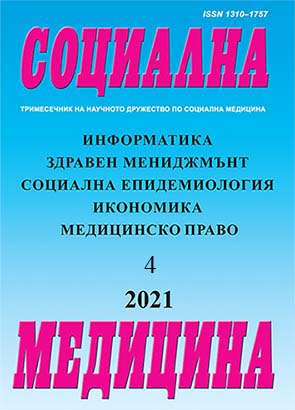Детската смъртност в българия в европейски контекст (1960-2020 г.)
Infant mortality in bulgaria in a european context (1960-2020)
Author(s): Nadezhda Mihaylova-Georgieva, Klara DokovaSubject(s): History, Social Sciences, Sociology, Local History / Microhistory, Social history, Recent History (1900 till today), Health and medicine and law, Family and social welfare, Post-War period (1950 - 1989), Transformation Period (1990 - 2010)
Published by: Издателство на Медицински университет “Проф. д-р П. Стоянов“ - Варна
Keywords: infant mortality; neonatal; early neonatal; Bulgaria; European countries
Summary/Abstract: .Indicators from the group of infant mortality (IM) allow an assessment of the extent to which social, political, economic conditions in countries and their health systems enable children to successfully pass their first year of life. The aim of the present study is to reveal trends in general and age-specific IM indicators in Bulgaria and selected European countries. Material and methods: Data on IM, neonatal and early neonatal IM in Bulgaria and 28 other European countries for the period 1960-2020 were extracted from the Eurostat database. Trends for the three indicators in each of the four decades are examined and assessed by comparing levels between the beginning and end of the period for each country and between countries. Results: For the sixty-year period (1960-2020), IM rates follow a permanent favorable trend of decreasing lev- els, both in Bulgaria and in the selected European countries, but the processes proceed at a different pace. IM in Bulgaria decreased about 9 times, while countries with a worse “start” such as Portugal, Croatia, Poland, decrease IM by 32, 17, 15 times, respectively. NIM decreased almost 6.5 times, and the value of 3‰ in 2020 ranks our country together with Croatia and Slovakia from 25th to 27th place out of 29 countries. Early neonatal IM decreased 5 times, and the value of 1.9‰ places Bulgaria in twentieth place out of 29 countries. Conclusion: An asymmetry has been revealed in the changes of IM on the one hand and neonatal and early neonatal rates on the other in our country. The asymmetry is expressed in more favorable results in the reduction of NMR and ENMR, while the IMR in Bulgaria lagged behind significantly compared to other coun- tries. This specificity of the trends in IM in Bulgaria showed that the negative processes are not only due to gaps in the health system, and their solution requires a systematic, multisectoral approach.
Journal: Социална медицина
- Issue Year: 29/2021
- Issue No: 4
- Page Range: 4-8
- Page Count: 5
- Language: Bulgarian

